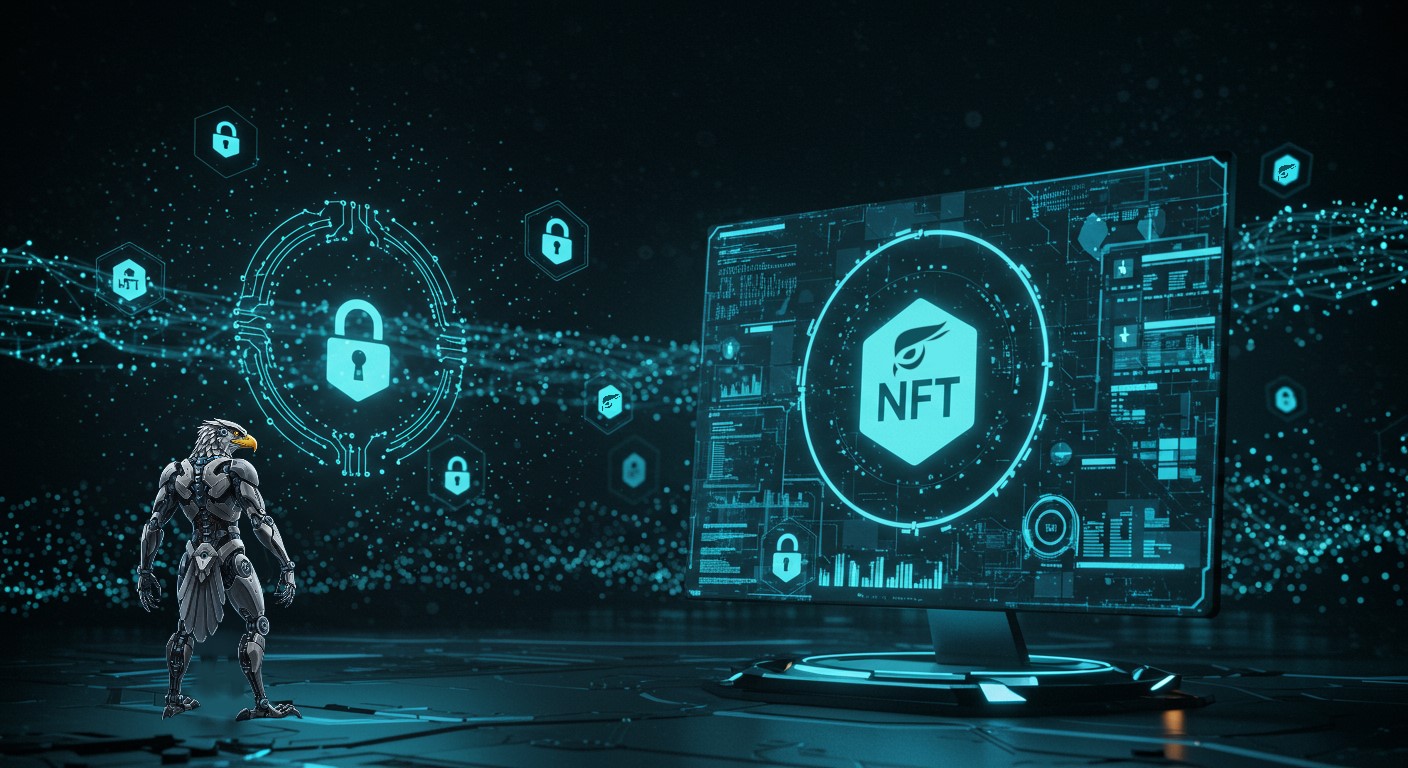NFTs and Their Decline: How Raptoreum is Revolutionizing Digital Assets Management
NFTs (Non-Fungible Tokens) quickly became a global trend, promising to revolutionize digital ownership through blockchain technology. However, their rapid decline was not simply the result of a speculative bubble, but due to structural flaws that exposed critical vulnerabilities. As the NFT market searched for viable alternatives, Raptoreum (RTM) since emerged with a different proposal: to manage digital assets directly on the Layer 1 of its blockchain, with a strong focus on security and decentralization at its core securing trust of both creators and issuers.
The Collapse of NFTs: Beyond Speculation
Vulnerabilities in Smart Contracts
The NFT market went from explosive growth to a significant slowdown, marked by fundamental issues. Most NFTs relied on contracts written in Solidity, a language prone to errors. This fragility allowed for multimillion-dollar hacks and scams, exposing users to significant losses.
Hidden Centralization
Many NFTs stored metadata on centralized servers, which made entire collections inaccessible when their platforms shut down. This hidden centralization undermined the supposed decentralization of NFTs, leading to a loss of trust in the market.
High Costs and Sustainability Issues
High fees and energy consumption pushed creators and buyers away, affecting mass adoption. The environmental impact of NFTs became a significant concern, with the energy-intensive process of minting and trading them contributing to the industry’s decline.
Speculation and Fraud
The excessive promotion of certain collections and constant “rug pulls” eroded public trust. The speculative nature of the NFT market led to inflated prices, and many buyers were left with worthless assets, further damaging the reputation of NFTs.
Raptoreum: Rebuilding Trust from the Ground Up
Core Wallet with Native Asset Management
Raptoreum addresses the mistakes of traditional NFTs with a different approach: integrating asset management directly into the Layer 1 of its blockchain, eliminating external dependencies and increasing security. Users can create, transfer, and store digital assets directly from the official wallet, without the need for complex smart contracts, reducing failure points considerably.
GhostRider Mining System
Raptoreum uses an ASIC-resistant mining system, ensuring a more decentralized network and reducing vulnerability to 51% attacks. This decentralized approach ensures greater security and fairness in the network.
Enhanced Security
Raptoreum avoids error-prone languages like Solidity and employs audited C++ code. Additionally, connected asset data is stored on a decentralized IPFS cluster, ensuring perpetual access and avoiding issues of centralized storage.
Efficiency and Low Cost
Transactions on Raptoreum are fast and accessible, solving scalability and cost issues that affected Ethereum and other networks. Raptoreum provides a more efficient and low-cost solution for digital asset management and transfer.
NFTs 2.0: How Raptoreum is Changing the Game
With Raptoreum, a new landscape opens where:
- An artist can issue NFTs directly from their wallet without paying exorbitant fees or relying on centralized platforms.
- A collector can transfer an asset without exposing themselves to smart contract hacks.
- Institutions can register certificates and property titles on RTM with the guarantee of immutability and long-term accessibility.
While blockchains like Ethereum try to patch their infrastructure with expensive updates, Raptoreum offers a robust solution from its foundation.
Now that we’ve discussed how Raptoreum is revolutionizing digital assets and NFTs, I’d like to invite you to take a look at an NFT I minted in just a few minutes, directly from my Core Wallet, without the need for complex code or relying on third-party platforms.
This NFT was created entirely within the Raptoreum blockchain, showcasing the power of Layer 1 technology and offering a truly decentralized experience. With Raptoreum, you don’t need to worry about hidden centralization or excessive fees—everything is done securely, quickly, and at an extremely low cost.
Take a moment to explore it here:
https://ipfsweb.raptoreum.com/ipfs/QmNRqE4h8PiUnanpfEgdaDZZJL7aK2SvMtvpTyWc3NrdzL
In less than 5 minutes, you can mint your own NFT directly on the Raptoreum blockchain—no need for smart contracts or third-party involvement. This is the future of digital assets, and Raptoreum is leading the way.
Conclusion: A New Era for Digital Assets
The collapse of NFTs was not a failure of blockchain technology, but rather a lesson about failures in implementation. Raptoreum, with its Layer 1 focus and robust infrastructure, has not only learned from past mistakes but is paving the way for the future of digital assets. It’s time to leave behind the errors of the past and build something better, safer, and more accessible for everyone.
Let’s not let the failures of others define the future of our assets. Raptoreum is here to lead the way into a new era of trust in blockchain, be it in intellectual property, artworks, licencing, ticketing and much much more.
Thank you for reading! I hope this article provided valuable insights into the challenges NFTs faced and how Raptoreum is shaping the future of digital assets. If you found it meaningful, don’t hesitate to share it with your friends and colleagues. Your support plays a crucial role in helping Raptoreum grow and make a lasting impact in the blockchain space.
I would also like you to remember something. – – Raptoreum does not copy what is out there already, it has only created what was not there before, and it will continue to do so.
Stay tuned for more updates and articles!
With gratitude and respect,
Alejandro Molina
Raptoreum Hispanic Community

